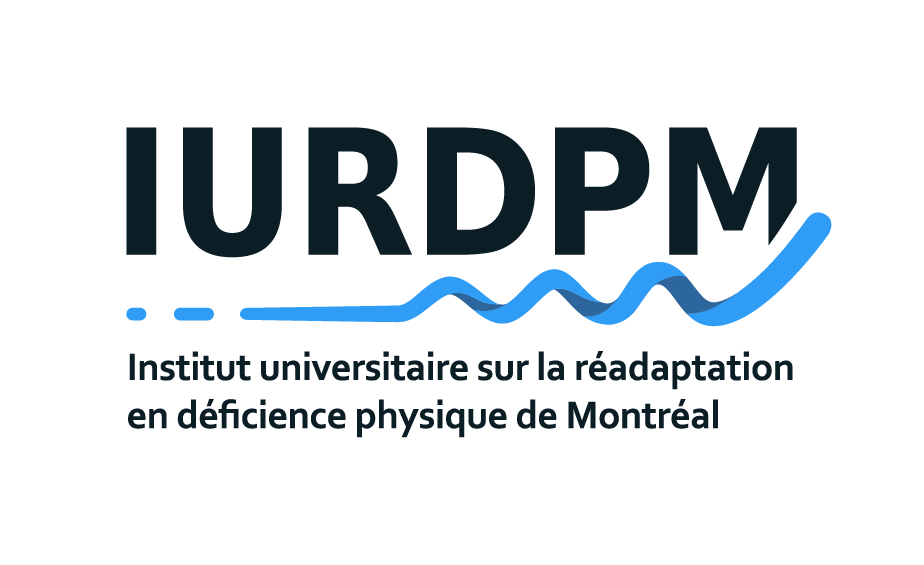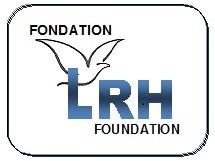History of CRIR
Introduction
The Centre for Interdisciplinary Research in Rehabilitation of Greater Montreal (CRIR) has developed around a common vision: advancing rehabilitation research for the benefit of people living with physical disabilities. Since its creation, the CRIR has established itself as a centre of excellence thanks to the commitment of its members, the strength of its partners, and the continuous evolution of its governance structures.
The following narrative timeline traces the major milestones in this transformation, highlighting the key moments that have shaped its identity and strengthened its mission.
Also discover the key figures who have led CRIR’s scientific direction since its inception.
An operational and research coordination infrastructure that has proven its worth
Since its planning phase in 1999, CRIR has created positions and committees to facilitate the functioning and management of research activities. More than 25 years later, these structures remain in place. To organize its scientific activities, CRIR established two key committees: the research orientation committee (COR), composed of the scientific direction, axis and thematic unit leaders, clinical research coordinators, and two representatives from the student community. The COR proposes the main research directions and advises the scientific leaders. The site coordination committee (CCS) was created to ensure coordination of human and material resources among the different research sites. The CCS brings together the scientific leaders, site administrators, the CRIR department head, and managers from member institutions.
CRIR’s governance: a continuously evolving structure
In 2000, CRIR implemented a formal governance structure through its Board of Directors (BoD). It brought together six independent rehabilitation facilities, represented by their executive directors and respective foundations, who were key partners in research: the Jewish Rehabilitation Hospital (HJR), the Montreal Rehabilitation Institute (IRM), the Lucie-Bruneau Rehabilitation Centre (CRLB), the Raymond-Dewar Institute (IRD), the Constance-Lethbridge Rehabilitation Centre (CRCL), and the Nazareth and Louis-Braille Institute (INLB). Three universities also joined as affiliates: Université de Montréal, McGill University, and Université du Québec à Montréal (UQAM). At that time, CRIR already included 46 researchers and 151 graduate students.
From the outset, CRIR collaborates with regional rehabilitation centres by partnering with three facilities: the Estrie Rehabilitation Centre (CRE), the Physical Disability Rehabilitation Centre Le Bouclier (CRDPLB) serving the Laurentians and Lanaudière regions, and the La Ressource Rehabilitation Centre in the Outaouais. Later, the MAB-Mackay Rehabilitation Centre (CRMM), which serves the English-speaking population of several Quebec regions, joined as well.
In 2010, to strengthen the academic dimension of its mission and to support its academic designation request, the BoD evolved into a consortium of rehabilitation establishments operating a University Institute (CRIU). This marked an important milestone in recognizing CRIR’s academic role. Following the 2015 health system reform, which merged several establishments, the CRIU became the University Rehabilitation Hub (PUR). This new hub brought together founding institutions into four integrated establishments now known as the Institut universitaire sur la réadaptation en déficience physique de Montréal (IURDPM); part of the CIUSSS du Centre-Sud-de-l’Île-de-Montréal, formerly IRM, CRLB, and IRD; the Lethbridge-Layton-Mackay Rehabilitation Centre; part of the CIUSSS West-Central Montreal, formerly CRCL and MAB-Mackay; the Jewish Rehabilitation Hospital (CISSS de Laval) and the Nazareth and Louis-Braille Institute (CISSS de la Montérégie-Centre). The Physical Disability Rehabilitation Centre, formerly Le Bouclier, was divided into two entities, the CISSS des Laurentides and the CISSS de Lanaudière, which remain CRIR partners.
In 2023, a new governance agreement was signed among the founding institutions, renewing the partnership while modernizing and simplifying administrative processes under the new legal framework governing institutions. This agreement created the CRIR Governance Committee (CGC), bringing these establishments together while clarifying processes to expand the scope of research across the continuum of rehabilitation services offered within their integrated health and social services centres (CIUSSS and CISSS).
Together, these establishments serve clients of all ages living with various physical disabilities affecting their motor function, hearing, vision, language, or communication. This renewed governance reflects CRIR’s commitment to remaining an agile and inclusive research centre, rooted in Quebec’s clinical and social realities.
CRIR funding: a catalyst for innovation and growth
From its earliest years, CRIR benefited from strategic funding that laid the foundation for a high-performing research environment. In 2000, rehabilitation facilities and their foundations, along with the Fonds de la recherche en santé du Québec (FRSQ), the Conseil québécois de la recherche sociale (CQRS), and the Ministry of Health and Social Services (MSSS) provided major financial support for the Centre’s infrastructure, marking the beginning of long-term institutional backing.
The following year, in 2001, CRIR reached a major milestone when it received, jointly with the Centre for Interdisciplinary Research in Rehabilitation and Social Integration (Cirris), a significant grant of $9.7 million (including $5.9 million for CRIR) from the Canada Foundation for Innovation (CFI) and the MSSS. This funding, along with CFI start-up grants awarded to two CRIR researchers, doubled the size of research facilities and equipped laboratories with cutting-edge technologies. Specifically, $6.5 million was invested in purchasing equipment and developing new spaces across CRIR’s six research sites and the Visual Perception Laboratory at the Université de Montreal’s School of Optometry.
These investments gave CRIR members access to over 2,323 m² of facilities, including about thirty specialized laboratories, dedicated research spaces, mechanical and electronic workshops, computer rooms, meeting rooms, and offices. This financial support positioned CRIR as a state-of-the-art research centre, able to attract top-tier researchers and to train a dynamic new generation of scientists.
More recently, in 2017, CRIR received another major grant – $4.9 million- for the Brilliant-Rehab program (Biomedical Research and Informatics Living Laboratory for Innovative Advances of New Technologies in Community Mobility Rehabilitation). This project developed biomedical infrastructures for cutting-edge lab treatments combined with digital health solutions to improve data collection in clinical and community rehabilitation contexts. The program exemplifies CRIR’s ability to innovate in response to contemporary challenges in health research.
Today, in 2025, CRIR continues to expand and modernize (now reaching 4,087 m²) to accommodate the constant growth of its members. Much of the research now takes place in hybrid formats (in-person and virtual), prompting a rethinking of how research spaces are shared.
Today, CRIR stands as one of the largest rehabilitation research centres in Canada!
1997: The first steps of the CRIR
It was in the fall of 1997 that the Fonds de recherche Santé Québec (FRSQ) reached an agreement with institutional researchers and administrators to develop a research plan aimed at creating a multi-site, interdisciplinary rehabilitation research centre in Montreal: the Regroupement des établissements de réadaptation en déficience physique de Montréal (RERDPM).
This plan is submitted to the FRSQ and to the Conseil québécois de la recherche sociale in the fall of 1999 and approved by these organizations on April 1, 2000.

May 2000: Official recognition of the CRIR
The CRIR is now officially recognized!
The CRIR aims to better meet the needs of people of all ages living with a physical disability. Its mission is to “optimize the functional capacity and performance, participation, and social inclusion of persons with physical disabilities through research in the biomedical and psychosocial fields of rehabilitation.”
Its new visual identity is created.
To this day, the CRIR is led by a scientific co-directorship representing both the Université de Montréal and McGill University.

2000: New Initiatives Program
This competition is created to stimulate clinical research and encourage the involvement of clinicians in research. It aims to catalyze the launch of new research projects in response to questions arising from clinical practice, by supporting the drafting of research protocols on original issues or the creation of new research teams. Multi-site or cross-theme projects are encouraged, as well as intersectoral collaborations involving external partners to improve care and services.
Over its 25 years of existence (2000–2025), this program has funded nearly 150 research projects for a total of almost $1.0 million, while fostering meaningful collaborations between CRIR researchers and clinicians.
September 2002: Establishment of the Research Ethics Committee for CRIR institutions
In 2001, CRIR faces administrative challenges linked to its multicenter projects, particularly the multiplication of ethics reviews resulting from its affiliations with six healthcare institutions and three universities. To address this problem, the idea of a single evaluation process recognized by all partners emerges. After consultation with the general administration of these institutions, a joint Research Ethics Committee is created on September 4, 2002, the Research Ethics Committee of the six CRIR institutions (CER-CRIR). Each board of directors is responsible for appointing its members, renewing their mandates, and approving the CER-CRIR’s annual report. A set of rules governs the evaluation of projects involving human participants. The CER-CRIR introduces an institutional suitability review process, which is later adopted by all research ethics committees in Quebec. To meet the requirements of the Ministerial Action Plan on Research Ethics (PAM 1998), a Joint Scientific Evaluation Committee is also established.
Learn more in this video (in French):

2007: Reorganization of CRIR’s Research Axes and Thematic Units
In the fall of 2007, CRIR undertakes a major reorganization of its research axes and thematic units. Since its creation, the centre had been structured around three thematic axes, renamed in 2003: (1) Sensorimotor functions and mobility, (2) Communication, sensory and psychological functions, and (3) Care, services, and programs in adaptation and rehabilitation, encompassing eight thematic units.
This structure changes to revolve around two axes: Axis 1, “Sensory, motor, and cognitive functions and activities,” and Axis 2, “Participation, social inclusion, and rehabilitation services,” bringing together four thematic units. In addition, the needs identified within an interdisciplinary, cross-sectoral, and proactive approach are integrated across priority cross-cutting themes: (1) knowledge transfer; (2) technologies and assistive devices; and (3) health promotion, well-being, and prevention of disabilities.

2011–2015: Living Laboratory in Rehabilitation (RehabMaLL) at the Alexis Nihon Shopping Centre
In 2011, with funding from the “Innovative Strategic Development Project” program of the Fonds de Recherche du Québec (FRQ), CRIR launches the very first interdisciplinary and multisectoral research project in rehabilitation. This pioneering initiative aims to identify the main physical and psychosocial barriers to social participation and inclusion for people living with physical disabilities, within the context of a shopping mall: the Alexis Nihon Shopping Center (Cominar). Based on a Living Lab approach, more than 60 projects are carried out, engaging CRIR’s member researchers, clinicians, and students, as well as community and association partners. These initiatives help transform the mall’s environment, leading to a substantial increase in visits by people with functional limitations, from 6% to 23%, as part of the RehabMaLL initiative.
Learn more about the Living Laboratory in Rehabilitation (RehabMaLL) (in French):

2013: Development of the Six Dimensions of the University Mission
A central element since the creation of CRIR, the goal of becoming a university-affiliated institute continued in 2013 with the establishment of working committees on Evaluation of Technologies and Modes of Intervention in Rehabilitation, Best Practices, and Knowledge Transfer. These committees complemented the existing teaching and research structures within each of CRIR’s member institutions.
This stage served as a cornerstone for the creation of a university institute. Shared resources were allocated to the Evaluation of Technologies and Modes of Intervention, funded by the Consortium of Rehabilitation Institutions operating a university-affiliated institute.
2015: Designation of the Institut universitaire sur la réadaptation en déficience physique de Montréal (IURDPM)
In July 2015, the CIUSSS Centre-Sud-de-l’Île-de-Montréal (CCSMTL) receives a university designation in physical disability rehabilitation from the Ministry of Health and Social Services. This designation leads to the creation of the Institut universitaire sur la réadaptation en déficience physique de Montréal (IURDPM), enabling the development of the six dimensions of the academic mission (research, teaching, best practices, knowledge transfer, outreach, as well as and technologies and modes of intervention evaluation) to foster innovation needed to continuously enhance rehabilitation services offered to the population of Quebec.

2017: Creation of the Inclusive Society Initiative
Toward a more inclusive Quebec society is a participatory and intersectoral research initiative aimed at fostering the creation of more inclusive physical and social environments for people with disabilities. This initiative emerged from the joint commitment of four organizations, the Quebec Rehabilitation Research Network (REPAR), the CRIR, the Interdisciplinary Research Center on Rehabilitation and Social Integration (CIRRIS), and the strategic cluster INTER to combine their expertise in addressing major social issues affecting people with disabilities.
Building on the continuity of the RehabMaLL Living Lab, this initiative supports research projects involving collaboration among partners from the community, municipal, cultural, private, and health sectors, alongside academic researchers. From 2017 to 2023, the Inclusive Society Initiative was funded by the Fonds de recherche du Québec. Since 2023, it has been supported by the Azrieli Foundation and the Mirella and Lino Saputo Foundation.

2018: Integration of Researchers within Institutions
The first institutional researcher position was created in 2018 at the University Institute for Rehabilitation in Physical Disability of Montreal (IURDPM) of the CIUSSS Centre-Sud-de-l’Île-de-Montréal (CCSMTL) with the arrival of Diana Zidarov. This was followed by the creation of two other positions: Frédérique Poncet in 2020 at the Lethbridge-Layton-Mackay Rehabilitation Centre supported by the Habilitas Foundation, and Tatiana Ogourtsova from 2021 to 2025 at the Jewish Rehabilitation Hospital of CISSS de Laval supported by the Jewish Rehabilitation Hospital Foundation.
These researchers embedded within the CRIR have a broad mandate, including conducting studies in physical rehabilitation, according to their expertise, in collaboration with clinical, administrative, and community partners.
They apply for grants, write scientific articles, share research results through presentations and conferences, and supervise students.

2020-2021: 20th Anniversary of CRIR and Launch of the Eva Kehayia and Bonnie Swaine Recognition Awards
The CRIR celebrates 20 years of innovation and recognition!
In 2020-2021, the CRIR celebrates two decades of excellence in rehabilitation research with a series of remarkable activities and recognition:
- The first online scientific congress, “Catalyst for Innovation for Tomorrow’s Rehabilitation” (100+ presentations)
- An inspiring public lecture with Bean Gill
- The conference series “Getting to Know Each Other” to bring member institutions closer
- The launch of the knowledge mobilization tool, Le CRIR Branché
- The MERCI Campaign to recognize the commitment of clinical members and research staff
Two recognition awards are also created:
- The Eva Kehayia Recognition Award | Promising Early-Career Researcher recognizing a promising young researcher’s outstanding early contributions to rehabilitation research.
- The Bonnie Swaine Recognition Awards | Partnership and Knowledge Mobilization, honouring clinical members who have played a key role in partnership development and knowledge mobilization

2023: Start of the Carrefour des savoirs
The Carrefour des savoirs comes from a consortium of five Montreal research centres in health and social services: the CRIR, the Research Center of the Montreal University Geriatrics Institute, the Public Health Research Center, the Center for Research and Expertise in Social Gerontology, and the SHERPA University Institute—Immigration, Diversity, and Health.
Supported by the Fonds de recherche du Québec (FRQ) – Health sector, this initiative aims to help the professional development of graduate students to improve their employment prospects. Through workshops, mentoring, and internships, the Carrefour aims to help the students enhance their transversal skills such as communication, leadership, and creativity.

2025: 25th Anniversary of CRIR and Launch of the Forget-Bélanger Innovation Support Scholarship
Together for an inclusive future during the last 25 years!
To mark this quarter-century of innovation in rehabilitation research, the CRIR engages in dialogue with the community through a series of inspiring initiatives that combine art and science. A first travelling exhibition, “Together for an Inclusive Future”, is part of various public events held by our partners; their captivating interactive booths reach thousands of people affected or not by disability as well as their families. Our daring strategies signal a turning point in our science popularization approach: bistros, sports complexes, exhibition halls, science fairs, and entrances of our partner institutions become places we use for scientific outreach.
This year also marks the launch of the Forget-Bélanger Innovation Support Scholarship established in partnership with Robert Forget, his wife Céline Bélanger, the Nazareth and Louis-Braille Institute Foundation, and the RÉA Foundation. This annual scholarship supports a doctoral or postdoctoral student whose work promises to transform rehabilitation practices.
In 2025, the CRIR is an exceptional multidisciplinary structure with 124 regular and associate researchers organized into two research axes, more than 193 clinician/manager members collaborating on various research projects, and over 400 students. Research teams are grouped into more than 60 laboratories and research groups are located across CRIR’s four sites.
Our community is vibrant and oriented toward an ever more inclusive and innovative future!

Scientific co-director of the CRIR from 2000 to 2009, he is an Honorary Professor of the Faculty of Medicine at the Université de Montréal (UdeM) where he taught physiotherapy for 27 years at the School of Rehabilitation. After graduating in physiotherapy from McGill, he obtained a doctorate in neurological sciences from UdeM followed by postdoctoral training in Paris (neurophysiology) and in the Netherlands (psychophysiology). From 1989 to 2001, he was a FRSQ research scholar.
His main research interest is sensorimotor integration during posture and movement in humans. He studied the contribution of somesthetic and visual sensitivities to motor skills, CNS adaptation and excitability and interventions using somatosensory impulses in neurological disorders (deafferentation, stroke, head trauma or amputation).
In 1998-1999, he set up the CRIR, where he was co-scientific director from 2000 to 2009. Mr. Forget was Director of Physiotherapy Programs at UdeM from 2009 to 2016, where he created the first Quebec university program for internationally trained physiotherapists. For his leadership in professional education and research, he received, among others, the Prix Excellence (2000), the Carol Richards Award (2015) and the title of Fellow (2021) from the Ordre professionel de a physiotérapie du Québec (OPPQ) and the Career Medal of the Faculty of Medicine of the UdeM (2016).

Scientific codirector of CRIR from 2000 to 2020 and of the Institut universitaire sur la réadaptation en déficience physique de Montréal of the CIUSSS du Centre-Sud-de-l’Île-de-Montréal (IURDPM-CCSMTL) from 2015 to 2020, she is an Associate Professor and Director of Research at the School of Physical and Occupational Therapy, Faculty of Medicine, McGill University, Co-Director of Research at Site Feil Oberfeld, Jewish Rehabilitation Hospital, affiliated with McGill University, and a CRIR researcher.
Involved in the leadership of large-scale initiatives for several years, she is currently co-directing a pan-Canadian partnership initiative funded by the Social Sciences and Humanities Research Council, entitled Words in the World (2025). She also served in a co-leadership role within the strategic innovation initiative entitled: The RehabMaLL—A Rehabilitation Living Lab: Creating Enabling Environments for Social Participation and Inclusion for Individuals with Physical Disabilities (RehabMaLL initiative), and contributed to the co-direction of the Canadian component (McGill University–Université de Montréal–CRIR Living Labs) of the Horizon 2020 VITALISE project VITALISE—ENoLL, which brings together health and well-being living labs across Europe and Canada (2021–2025).
Her projects aim to explore the underlying mechanisms of language and communication limitations in people with acquired and degenerative neurological disorders, and to increase accessibility, participation and inclusion for all, especially people living with physical disabilities. Over the past five years, she has also focused on projects to improve accessibility and inclusion of people with physical disabilities in leisure environments, particularly in museums in Canada and Europe.

Scientific codirector of CRIR from 2009 to 2020 and of the Institut universitaire sur la réadaptation en déficience physique de Montréal of the CIUSSS du Centre-Sud-de-l’Île-de-Montréal (IURDPM-CCSMTL) from 2015 to 2020, she completed postdoctoral studies in epidemiology and biostatistics at McGill University. She is a Honorary Professor at the School of rehabilitation of the Faculty of Medicine at the Université de Montréal, and was the School’s director from 2020 to 2024. Her laboratory was at the IURDPM of the CCSMTL.
Trained physical therapist, she focuses her research on improving the care of children and adults who have sustained a traumatic brain injury (TBI), and on neurorehabilitation. She conducted epidemiological research on the risk of a second TBI in children and the risk of suicide after a TBI, as well as on mental health services. Most of her research is conducted in close collaboration with clinicians and managers in the province, Canada and Europe, and includes quality assessment of rehabilitation services (including dance therapy), development of assessment tools and knowledge transfer. She was co-scientific lead on the development of TBI clinical guidelines with the Ontario Neurotrauma Foundation and CRIR’s RehabMaLL initiative, a rehabilitation Living Lab within a shopping mall.

Co-Scientific Director of CRIR and the Institut universitaire sur la réadaptation en déficience physique de Montréal of the CIUSSS du Centre-Sud-de-l’Île-de-Montréal (IURDPM-CCSMTL) from 2020 to present, he holds a PhD in neuroscience from the Université de Montréal, and completed a postdoctoral internship in neurophysiology at the Università di Roma “La Sapienza” in Italy. He is Full Professor at the School of Physical and Occupational Therapy, McGill’s Faculty of Medicine. His laboratory is located at the Jewish Rehabilitation Hospital of the CISSS de Laval.
Trained occupational therapist, he is particularly interested in developing and evaluating rehabilitation technologies. His research is more specifically centred on the use of robotics and virtual reality for the rehabilitation of persons who suffer a stroke. Robotics, for instance, provides physical assistance to arm movements; virtual reality offers a stimulating environment in which a person living with a physical disability can practise everyday tasks.
He also leads research on the development and evaluation of simulators for the training of persons using a manual or motorized wheelchair, or a four-wheeled scooter.
Since 2017, he leads the provincial cross-sector initiative “Inclusive Society.” This initiative aims to improve the social inclusion of people with disabilities through participatory research. Inclusive Society funds and supports research teams regrouping community partners in collaboration with academic researchers.

Co-Scientific Director of CRIR and the Institut universitaire sur la réadaptation en déficience physique de Montréal of the CIUSSS du Centre-Sud-de-l’Île-de-Montréal (IURDPM-CCSMTL) from 2020 to present, she holds a PhD in Biomedical Sciences (Rehabilitation) and completed postdoctoral studies at McGill University (Health Informatics) and the University of British Columbia (Rehabilitation Sciences). She is a Full Professor at the School of Rehabilitation of the Faculty of Medicine at the Université de Montréal. Her laboratory is located at the IURDPM-CCSMTL.
Trained occupational therapist, she uses health computer science in her pan-Canadian research program to improve access, allocation, follow-up and training of people with a motor or sensory disability relying on technical assistance and family caregivers. Using participatory methodologies centred on the users and their ecosystem, she develops partnerships with businesses and clinical or community partners in Canada and abroad.
She also heads a networking initiative aimed at enabling the transfer of knowledge on methodological approaches to the assessment of the usability of rehabilitation technologies. Her expertise is sought by national and international committees working on these research themes.




